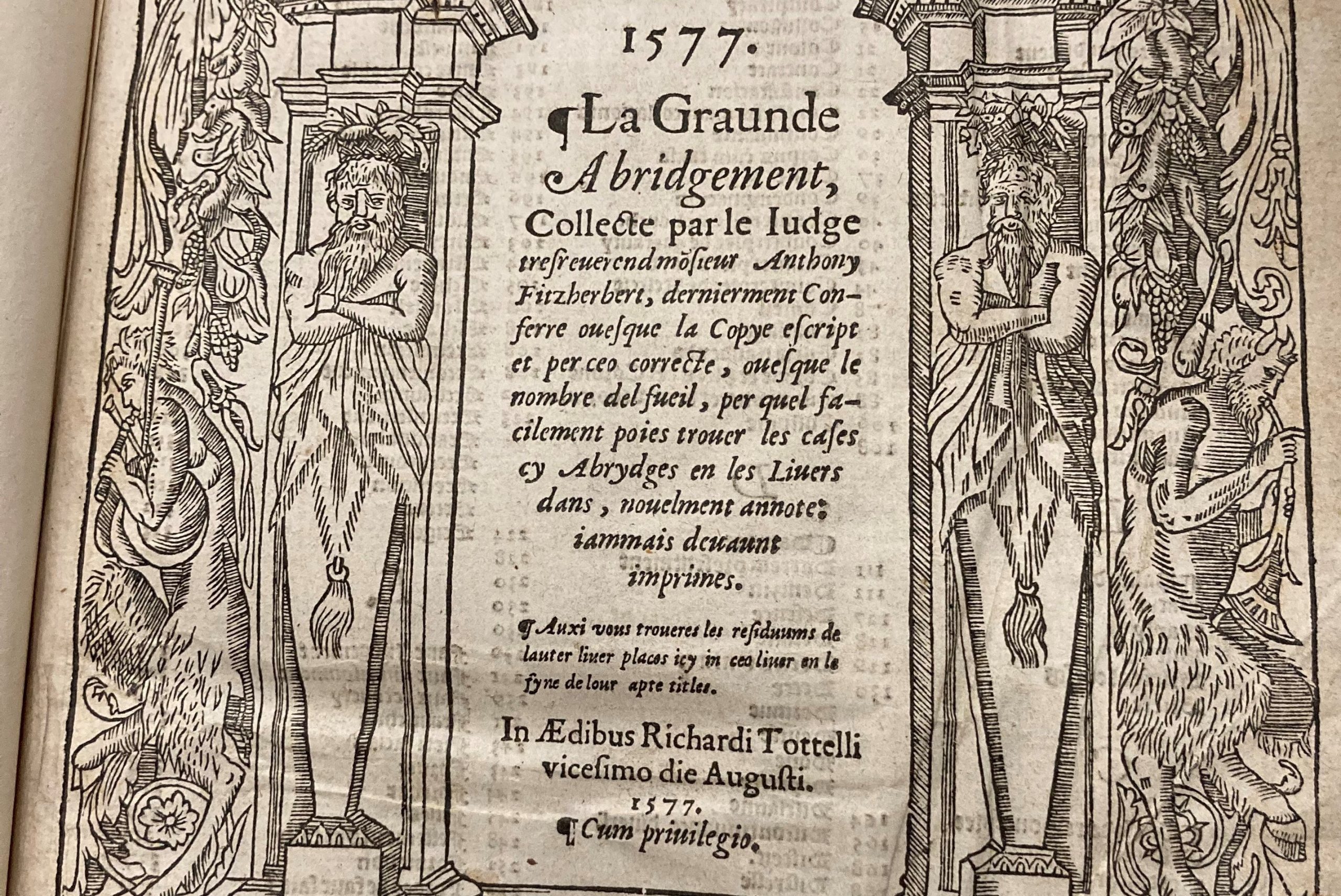Sir Anthony Fitzherbert, an English judge, published a compilation of English cases in 1516, seeking to reconcile medieval common law with a rapidly changing society. The Ross-Blakley Law Library owns a 1577 copy of this book, titled La Graunde Abridgement; a digitized version of the book is also available on HeinOnline.
One of the many interesting features of the Law Library’s copy of La Graunde Abridgement are the holes in the front and back cover. These holes allowed the book to be secured within an English medieval “chained library”; through the holes, a metal clip was riveted to an iron chain and ring, which in turn was attached to an iron rod secured to a bookshelf or reading desk by a hasp and padlock. 79 Scientific American 122 (1898). The books were chained
upright with inward-facing spines so that they could be pulled from the shelves and consulted at a nearby table, without having the chain removed. Dymphna Byrne, 37 History Today 5 (1987).

Books were chained at this point in time due to their rarity and value; it was not until the mid-eighteenth century, as book-printing became less expensive and more common, that religious and academic libraries in England stopped chaining their books. Id. at 6. One of the oldest chained libraries in England, and one of the few still in existence, is the Hereford Cathedral chained library, pictured below.

A video about the Hereford Cathedral chained library, narrated by Cathedral Librarian Dr. Rosemary Firman, can be viewed on the YouTube page of History West Midlands. In addition, a short New York Times article from 1931 provides fascinating information about the 1920s restoration of the Hereford Cathedral chained library – the article is accessible via ASURITE here.
Finally, we cannot leave this look at our 1577 law book without remarking upon the marginalia within it – it seems that the practice of making notes in the margins of law books dates back at least to the sixteenth century!





